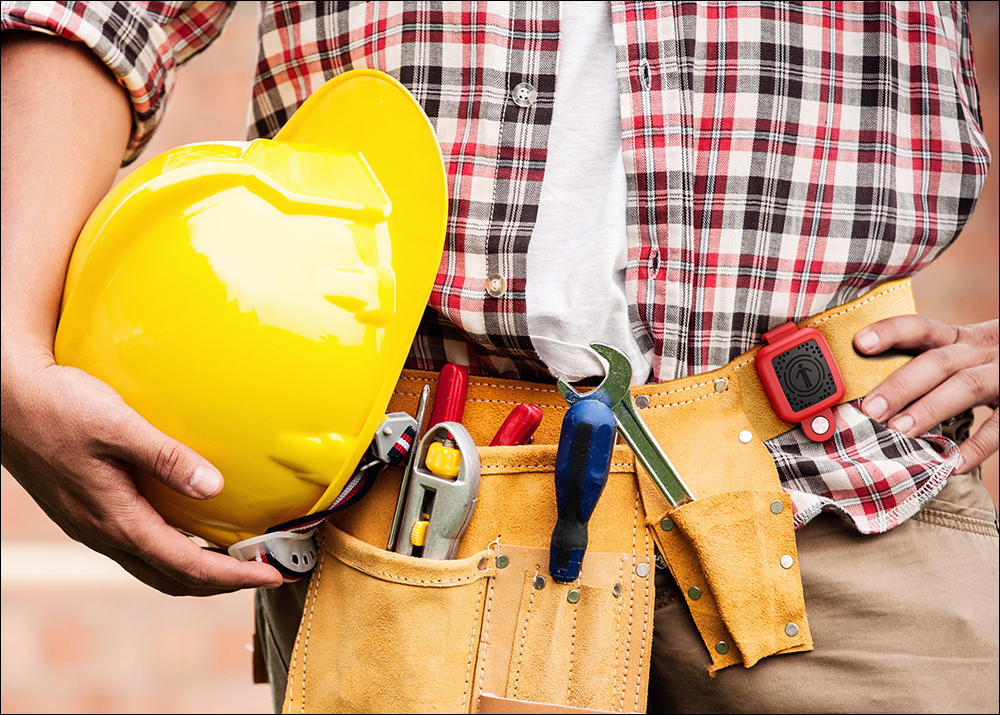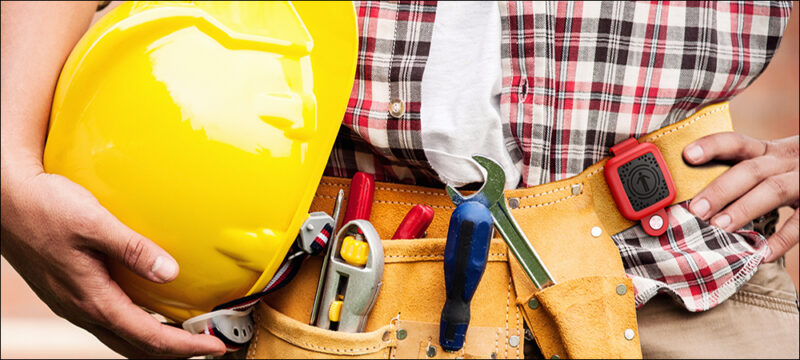Office and factory personnel, construction workers, and students attending fall classes all have unique needs when it comes to social distancing and contact tracking. With that in mind, RFID Global Solution has built a solution to address the challenges around safe workspaces in different environments, based on its cloud-based software and different wireless technologies—ultra-wideband (UWB) and ultrasonic mesh, both under the new product name SafeZone360.
This fall, offices, schools, construction companies and manufacturing sites have been piloting SafeZone360 in several iterations. One is designed to be better suited for indoor applications, while the other is aimed at outdoor settings. The ultrasonic version features a mesh network created by sensors on vests, to detect incidents of close proximity between workers in outdoor workspaces, such as at construction sites. The UWB version, on the other hand, is aimed at indoor environments for which users would deploy fixed bridges to capture transmitted data from wristbands or other UWB wearable devices as workers move about their workspace. RFID Global Solution demonstrated both versions at the recent RFID Journal Virtual LIVE! conference and exhibition.

The firm began developing its offering in May of this year. It conducted in-house testing, then launched pilots during the summer. To build the system, RFID Global Solution looked at 16 technologies, then opted to partner with several companies for the two versions, each of which leverage the company’s Visi-Trac cloud-based software. The ultrasonic sensor technology is manufactured in the United States by Flex, while the UWB hardware is produced in Europe. Both iterations can detect proximity incidents between individuals wearing the sensors, and can enable contact tracing so that companies can view if anyone has been in contact with someone who has tested positive for COVID-19.
Social-distancing and contract-tracing applications pose challenges for wireless technologies that have historically been deployed more for location than for proximity detection, explains Diana Hage, RFID Global Solution’s CEO. When considering the solution, she says, the company wanted something that could be controlled by employees or students, would be used only onsite, and wouldn’t need to run on a personal device, so as to ensure a level of privacy.
“After the pandemic started, we realized one of the biggest requirements for safe reopening would be to provide the technical ability [for businesses] to monitor their own space around them,” Hage explains. “We wanted to offer something as simple as a badge, and we also looked at safety vests.” From the start, she adds, the company realized that accuracy in proximity sensing would be critical. A Bluetooth Low Energy (BLE) tag, for example, provides location accuracy of 1 to 2 feet, which would not be acceptable in terms of protecting someone’s health, Hage says. “The technologies we chose are accurate within 2 to 3 inches.”
According to Hage, it became clear that two technologies would serve the variety of requirements. For indoor environments, SafeZone360 includes a UWB wristband, clip or lanyard, which companies can provide to each of their factory or office workers. The same technology is being planned or piloted in school environments. Each device (which has its own unique ID number) detects the proximity of similar devices at preconfigured intervals, while also receiving transmissions from similar devices when they come within close range. The range is also configurable, she notes, but is most frequently set at 6 feet.
When a device detects the presence of another unit within that 6-foot space, it provides three forms of alerting: an audible beep, a blinking LED light on its face, and vibration. If a worker is within another person’s safe zone, he or she can step back. The device stores the incident event, indicating the device’s unique ID. When a person comes within range of a BLE bridge, typically installed at chokepoints where workers pass, the wristband or other wearable transmits that data to the bridge, which then forwards it to the Visi-Trac cloud-based software. There, the information is stored for future contact-tracing or historical-data purposes. The tag ID is only linked to an individual’s identity in the company’s own system, Hage notes.
If an employee reports being ill or tests positive for COVID-19, the company can view the past two weeks’ worth of contacts on software dashboards, with date, duration and time stamps for each encounter. The software provides historical data as well and can display graphs indicating where and how often incidents occur during the course of a specified amount of time, such as seven days. It can also display how long workers remain within range of each other, or incident data related to a specific employee. Charts and graphs can be exported into the company’s own software, and notifications or alerts can be sent to indicate specific information.
Companies can view incidents, along with the frequency at which they occur and where they occur, and they can search by department or location. In that way, they can analyze a workspace and identify any modifications that might need to be made—for instance, if work is leading to interactions too close in nature. The other version of the solution is designed for outdoor use and utilizes mesh-network technology. Workers are provided with ultrasonic sensors embedded in safety vests. Sensors can also be attached over a jacket. In either scenario, sensors must be situated in front of and behind employees in order to provide a 360-degree detection area.

Diana Hage
As workers go about their day, the sensors transmit and receive data, and they can detect if another sensor device comes within range. That information is sent back via a mesh network, by hopping from one sensor to the next throughout a workspace, back to a gateway. The system is designed for outdoor use, such as in loading areas at warehouses, or on construction sites where workers require a vest and are typically outdoors. The technology could also be used for a variety of other outdoor purposes, such as detecting interactions between volunteers at a COVID-19 sampling station.
Several schools are currently planning pilots of the technology to identify when students, employees or faculty members come within an unsafe distance of each other. According to Hage, the design goal was to create something that would be easy to wear and use, would be low in cost and could protect privacy, meaning it would be designed to work only in a workplace and not on a personal mobile phone.
There were also technical considerations, Hage says. For instance, much of the technology the company looked into, in the form of badges, only detected transmissions in front of a person, and not behind him or her. Thus, the firm conducted multiple tests to ensure that its technology that could provide 360-degree visibility. “We’ve done some logic changes to the underlying detection technology,” she states.
Learnings from pilots have been “illuminating,” Hage reports, as the technology is put to the test in the real-world environment. For example, if an employee enters a washroom, the ultrasound sensors would receive reflected transmissions from mirrors. “We had to change the software logic to resolve that reflection problem,” she explains. RFID Global Solution also engineered the devices to eliminate blind spots around individuals. The first pilots began in June 2020, and the firm is now expanding to permanent deployments, mostly with smaller companies or schools, though RFID Global Solution is also in conversations with multiple medium- to large-size organizations.
In addition, RFID Global Solution is designing the solution with an eye toward future-proofing it for applications beyond contact tracing. For instance, it is building in accelerometers to detect falls, along with the functionality to receive broadcast alerts or messages from management. What’s more, the company is working with other technology firms to create additional versions of the solution, with IBM providing the solution offering as part of its Maximo Anywhere application suite.


